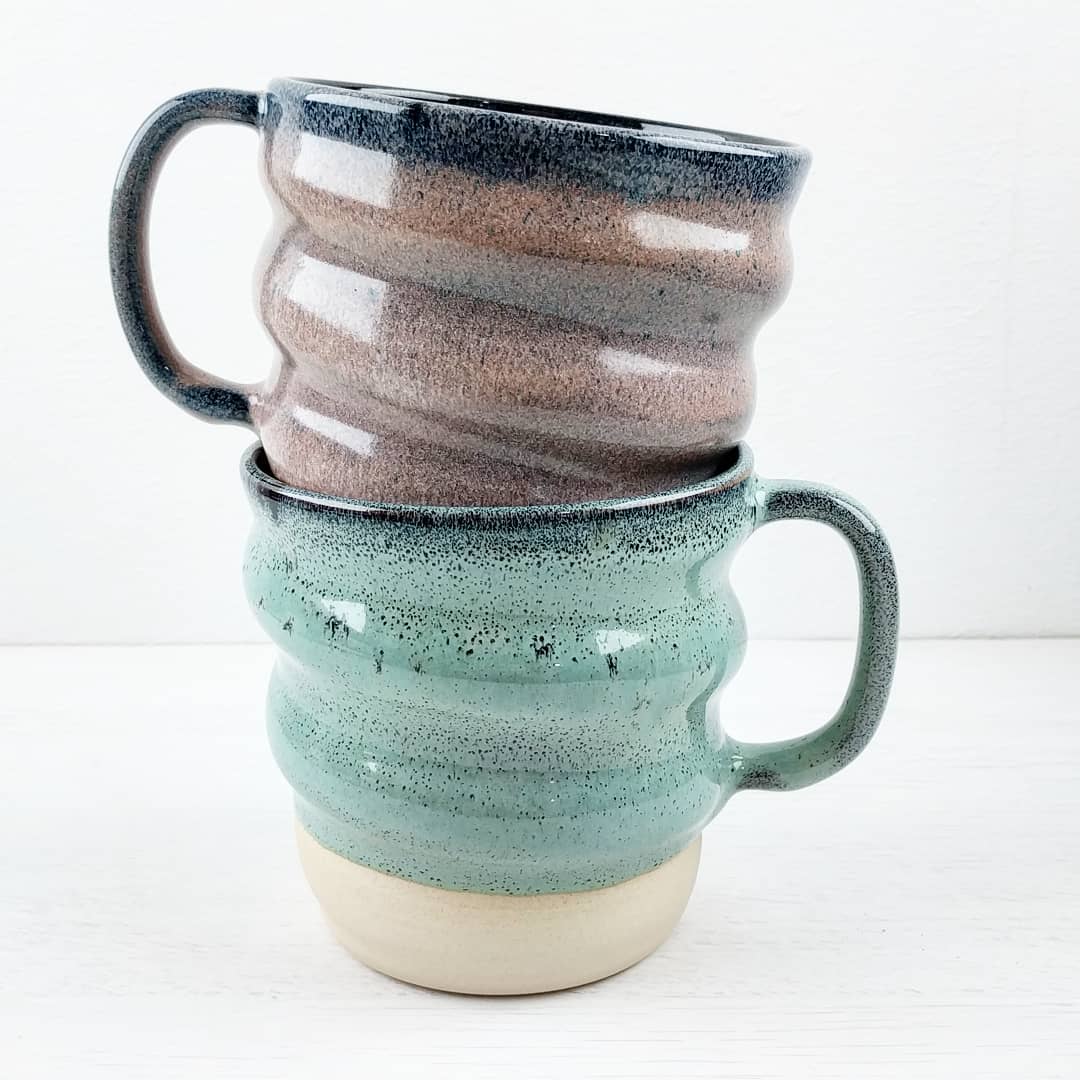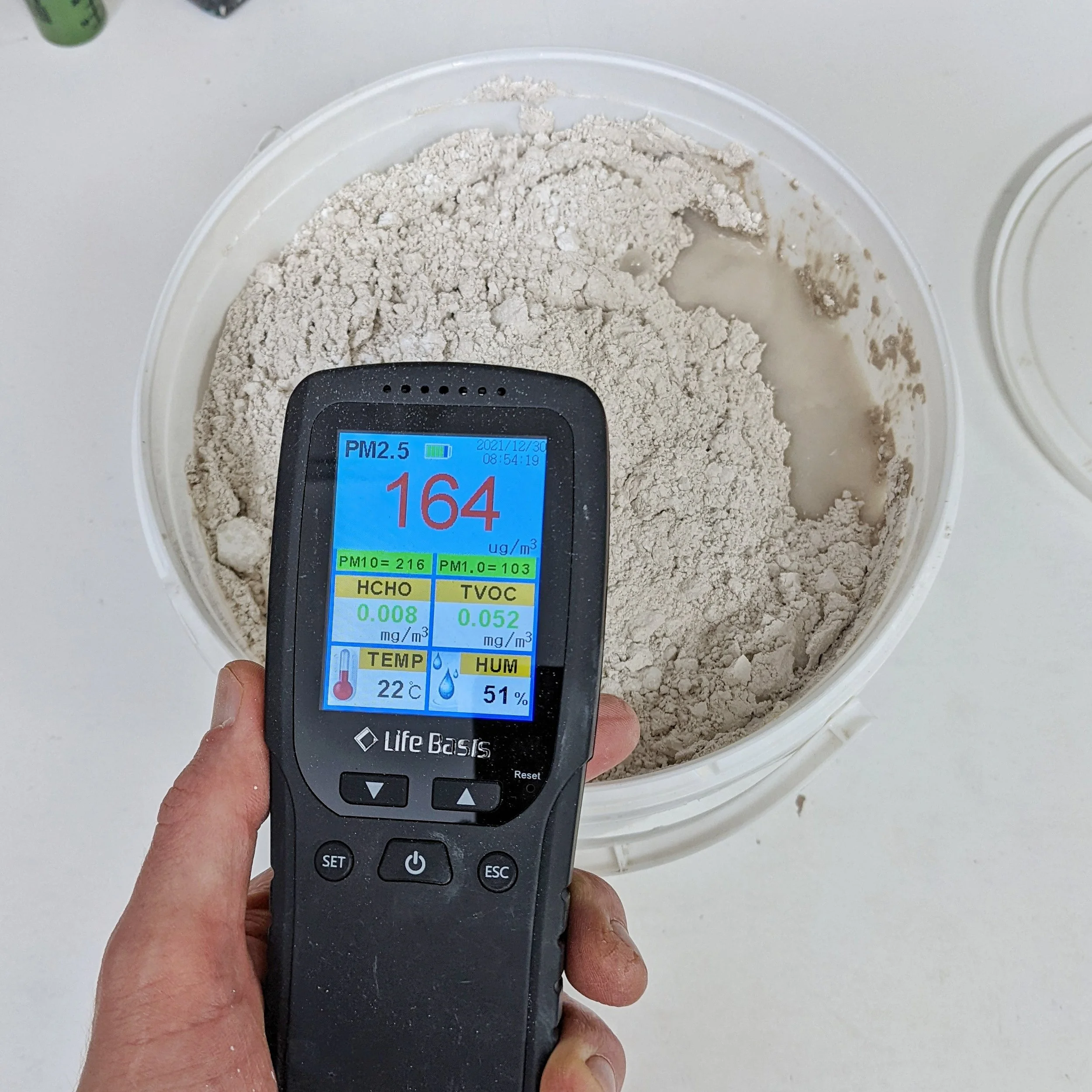Efficient Glaze Testing
I love seeing the results of glaze tests, but I hate the slow process of making dozens of different glazes and applying them to test tiles. There’s also a lot of waste if you mix up enough of each to dip a tile (rather than brushing it on) and have no use for it afterwards.
Thankfully there is a more efficient way, at least for tests that have continuous blends between two or more glazes. I’ll show the process I just used to test 15 different positions on Stull’s map (all chemistry being the same, other than silica and alumina levels) on two different clays (30 tiles total) by mixing up just 100g of the four glazes in the corners.
To start with, you’ll need small container that you can dip a single tile into. I use these Sterifeed 50ml Bottles and would highly recommend them. There doesn’t seem to be anything exactly the same in the USA, but these look very similar if a little deeper. These designs are perfect for the kind of test tile I use, but if you use a different shape of tile then you need to find a container that allows you to efficiently dip a tile in around 60-100ml of glaze. Here’s a good demo of a different style of tile being dipped very efficiently.
My test was 15 positions on Stull, in a 5x3 grid. I had recipes for the four corner positions which were made by adjusting the silica and alumina levels of a glaze.
(As always, I can’t recommend the CMW classes highly enough for really getting to grips with the chemistry of the glaze ingredients. You can use offer code oldforgecmw for 25% off the Cone 6 course, which is an excellent starting point for getting deeper into understand what each ingredient does.)
I mixed up 100g of each and used 90g water (but this number doesn’t matter as long as you’re consistent with it), then dipped the corner test tiles. I put each tile on a scale and zero it before dipping, then check the weight afterwards to see how much glaze was added. A lot of glazes are dramatically different based on application thickness, so meaningful comparisons are much easier when you have a known and consistent application weight. It only takes a few seconds per piece, so I’d highly recommend it.
This is where it gets a bit more interesting. You can connect the four corner points on Stulls map, and any position within that box can be achieved by blending different amounts of the corner mixes.
I want to spend the least amount of time on this process, waste the least amount of glaze, and get the most consistent results. By working through the tiles in a sequence that makes use of previous mixes we can get all the combinations with enough glaze to dip, even though there isn’t enough of the corner glazes to make that many dippable mixes simultaneously.
This is how I did it, although there may well be many other sequences that work equally well.
I started with the four corners, as they’re the glazes I actually mixed.
Next, I did the four mid points by combining 35g of each corner.
Then I completed the top and bottom edge by splitting the midpoint in half and adding an equal amount of the nearest corner mix (in this case it was around 30g of the midpoint and 30g of the corner to make 60g overall)
Next I can combine the top and bottom of the 2nd and 4th columns to complete them
Finally, the left and right ends of the middle row make the centre mix.
This approach can be applied to larger grids. The sequence will change, but the general theme of starting at the corners and working inwards, and continually adding to a mix rather than setting it aside will be the key to making it work with as little starting glaze as possible.
In the example I’ve used, you could get away with 100g total (so 50g glaze mix + 50g water) in each corner, as you’re taking 35g, 35g, and 30g. You’d mix 200g of dry ingredients (400g inc water) and apply 75g of that onto the 30 test tiles (~5g inc water, or 2.5g of dry ingredients, per tile) and still be able to dip all 15 mixes in at least 60g of glaze mix. So it can be a very efficient use of ingredients.














